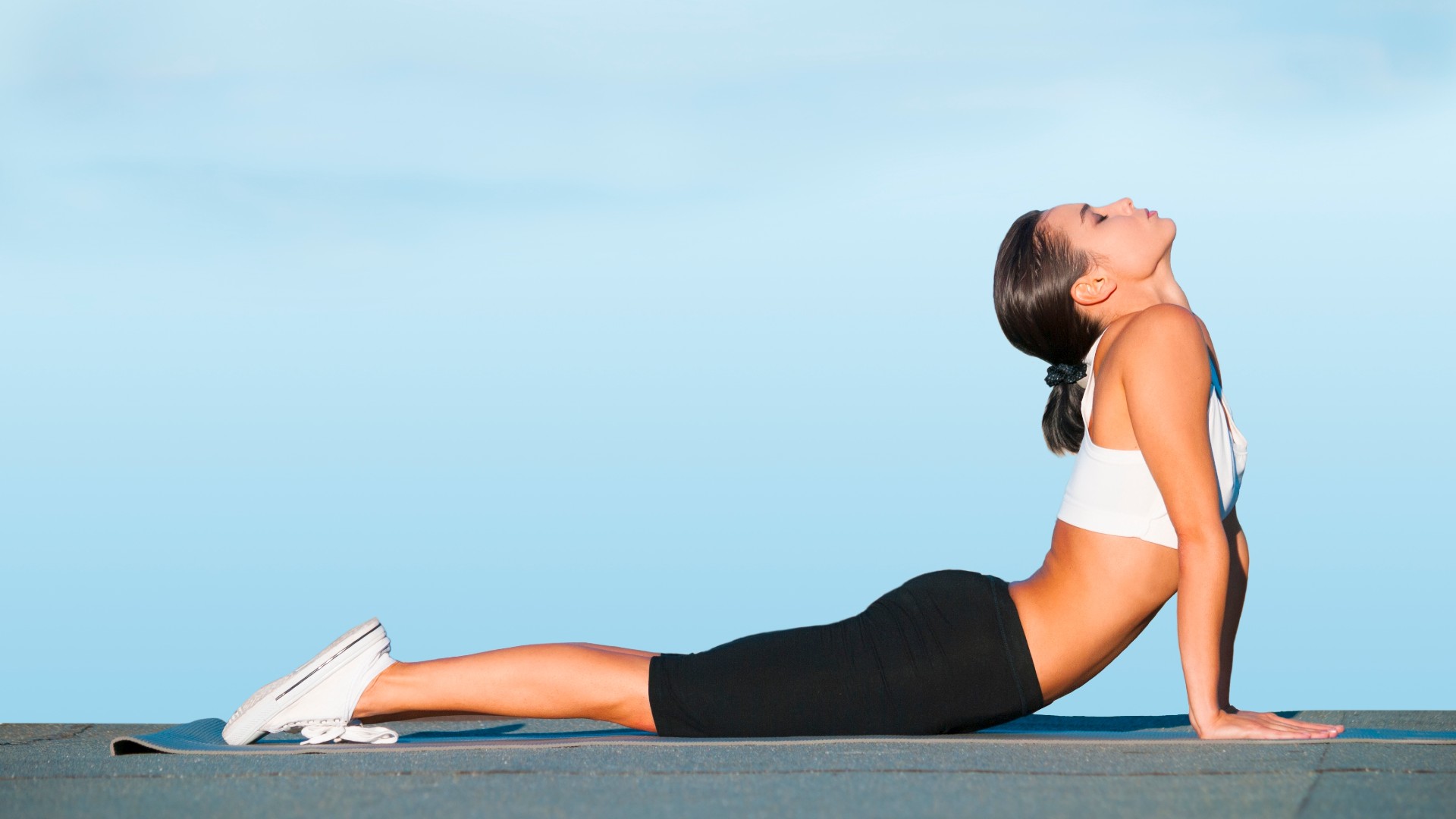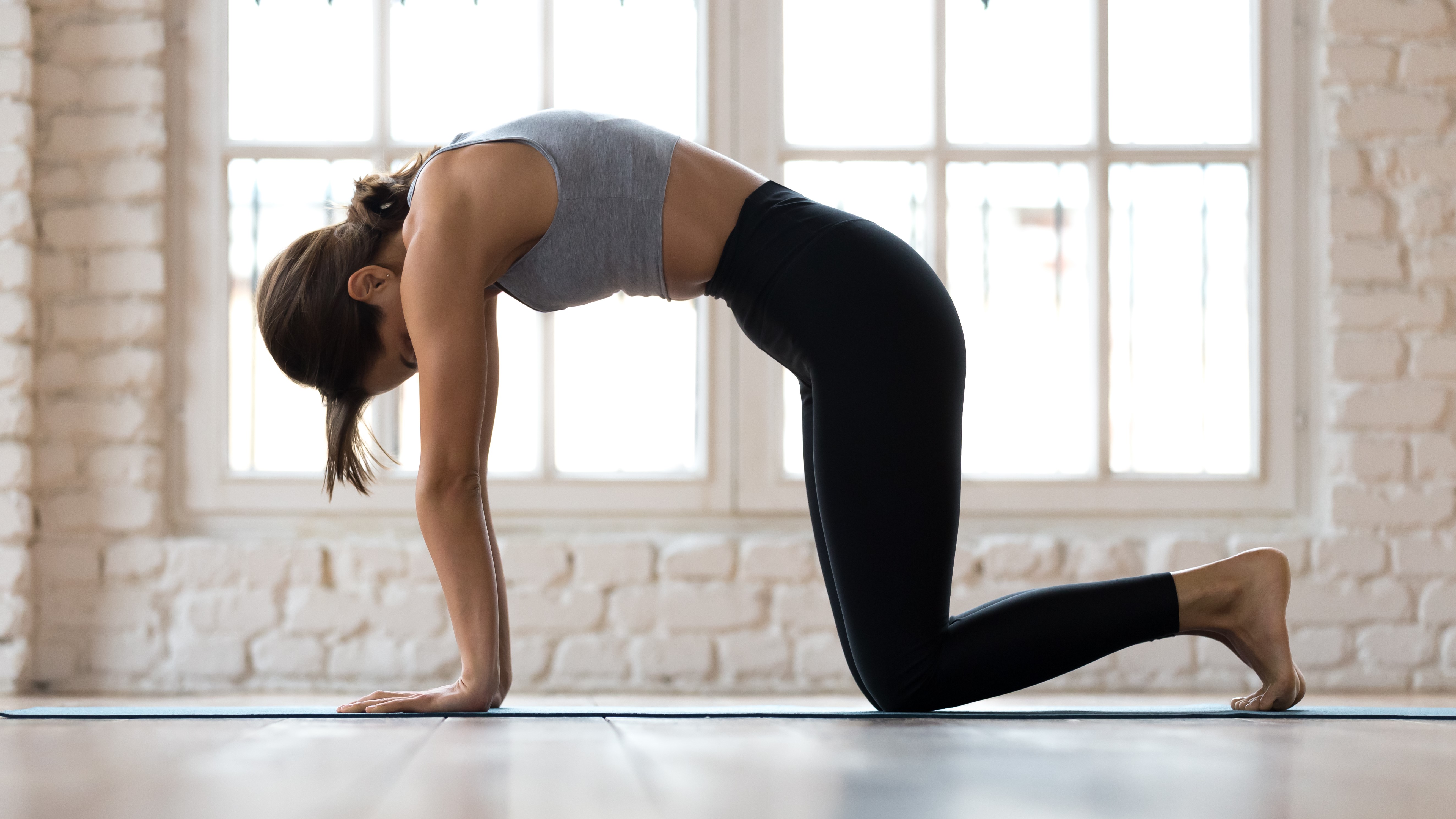
It’s time to give your spine some love and relieve back tension using this eight-move stretching routine.
The short routine, courtesy of Jessica Olie, is designed for backbend prep (shout out to the yogis), but you don’t need to be a super bendy yogi to do them. Each stretch helps improve stability and flexibility throughout your spine and strengthen the muscles across your back, regardless of your ability.
Besides, a regular stretching routine that targets your back muscles could boost mobility and range of motion in your posterior chain — the muscles responsible for helping you lift heavy weights, improve running economy and posture and move safely. Grab one of the best yoga mats and give these a go.
8-move stretching routine for tight back muscles
If you suffer from sciatica, we recommend these doctor-approved stretches instead, as the following backbends could worsen existing pain. Unsure? Always check with a qualified medical professional before trying a new exercise regime.
For many people, these stretches could relieve tension and help loosen up tight backs, but just check in with your body and stop if you experience any pain. We recommend one of the best foam rollers for the first exercise, but you could also use a rolled-up yoga mat or cushion instead.
Olie recommends warming up beforehand and spending 45 seconds on each pose, repeating the ones you need more from. Don’t force any moves; deep backbends shouldn’t be painful and simply release tension in the muscles surrounding your spine.
“Move with intention in your backbends, consciously thinking about creating space,” she says. Here’s the low down.
1. Foam roller extensions
As we mentioned, you could use a rolled-up yoga mat or similar if you don’t have a foam roller to hand. The move opens your back and mobilizes your spine. Create a soft arch and engage your core, resting your midback on the roller.
2. Cat-cow

Cat-cow is a yoga staple that helps create movement throughout your back. Olie says, “It does not need to be fancy to be helpful.” We totally agree. Here’s how to do the cat-cow stretch in more detail.
3. Puppy pose
Puppy is another yoga pose that targets the upper back — an area many people struggle to open up. “The lower back naturally has more mobility,” Olie says. “But we need to evenly distribute the bend in the spine as much as possible.”
4. Low lunge extensions
Low lunges help stretch the lower back and hip flexor muscles, relieving tension in areas responsible for back pain. Lift through your spine and press your chest forward as you gently lean into a backbend. If you don’t feel confident lifting both arms, keep your hands on your hips instead. “Imagine you have a bar behind you that you need to avoid touching,” Olie says. Over time, you’ll notice improvements in how far you can bend.
5. Camel pose
Camel can adapt to any level, so don’t be put off. Use yoga blocks if you need extra support, and press your hips forward as you lean back. You could also focus on one side at a time if this feels more comfortable. Start with both hands on the ground and practice, practice, practice.
6. Tiger pose
During tiger, focus on pressing your foot into your hand, then pull your foot with your hand as you lift your leg high behind you. Use the opposite arm and leg, and keep your supporting hand (the one on the mat) stacked below your shoulder.
7 & 8. Child pose and supine twists

Olie then throws in some counter poses to “reset the spine after extension.” These include a child pose with a gentle twist from left to right and supine twists. If you’re unfamiliar with the moves, fear not because Olie’s Insta video shows you everything you need to know for each pose mentioned above.
“After deep backbends, avoid deep forward bends,” she advises. “Ease your spine back to neutral with light twists and child pose.” During supine twists, keep both shoulders pressed into the mat and allow your knees to gently press down to one side.
Verdict
If the goal is to strengthen your back, reduce pain and improve posture, these stretches get a big tick from us. Primarily, they develop backbends in yoga but can be used in any fitness setting to build flexibility and spine mobility, too.
Remember that your body should move in all planes of motion: forward and back (sagittal), side-to-side (frontal) and rotational (transverse). To get the most out of stretches and mobility exercises, include all planes of motion, which should help recruit and strengthen all muscle groups more evenly.
If your spine is inflexible or stiff, or you want to prevent spine problems, add these stretches to encourage flexibility. Remember to use expansive breathing as you sit in each pose, imagining you can push your breath into every corner of your body.







